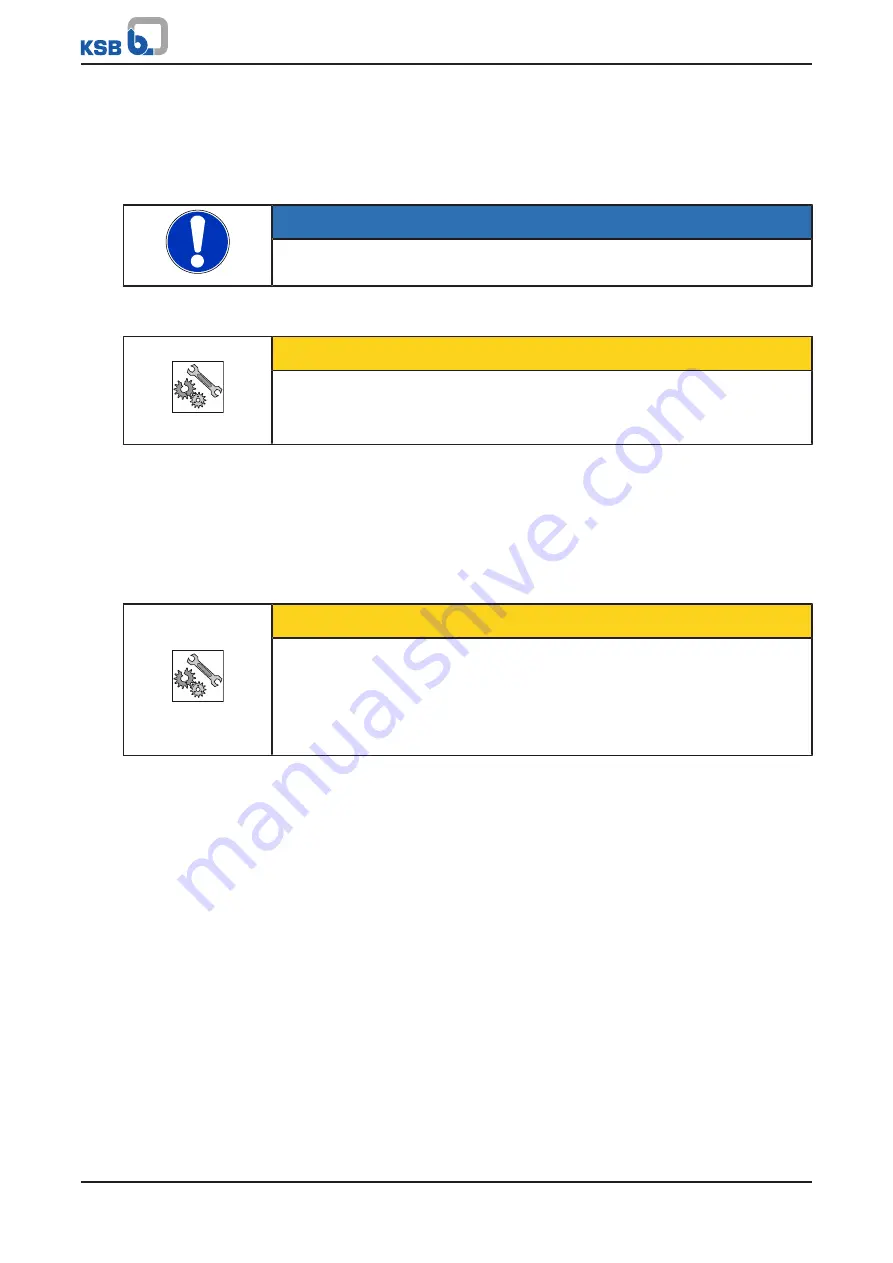
5 Installation at Site
17 of 38
ECOLINE GT 40
7367.8/06-EN
Make sure that the non-rising handwheel can be operated and that there is sufficient
clearance available for the rising stem.
The position and flow direction must be in accordance with the manufacturer’s data.
The valve must not be fitted downstream of tees and level or three-dimensional
double bends.
NOTE
For the valves to reach the documented Kv values, the flow direction must
correspond to the flow direction arrow.
5.3 Preparing the valve
CAUTION
Outdoor installation
Damage due to corrosion!
▷
Provide weather-proof protection to protect the valve against moisture.
1. Thoroughly clean, flush and blow through all vessels, piping and connections.
2. Remove the valve's flange covers before installing it in the piping.
3. Check that the inside of the valve is free from any foreign objects. Remove any
foreign objects.
4. If required, install a strainer in the piping.
5.4 Piping
CAUTION
Painting of the piping
Valve function impaired!
Loss of important information provided on the valve!
▷
Protect stem and plastic components prior to applying paint.
▷
Protect printed name plates prior to applying paint.
▪
Lay the piping in such a way that detrimental thrust forces and bending forces
are kept away from the valve body.
▪
For any further work (e.g. construction work, cleaning measures) protect the
piping against contamination (e.g. by covering it with a tarpaulin).
5.4.1 Flange connection
Fasteners
Only use fasteners (e.g. to DIN EN 1515-4) and flange gaskets (e.g. to DIN EN 1514)
made of materials approved for the respective nominal valve size. Always use all
flange bolt holes provided when connecting the valve to the pipe.
Flange connection
ü
The mating flange faces are clean and undamaged.
ü
Verify that the piping is correctly aligned and the flanges are parallel.
1. Align the valve between the pipe flanges.
2. Use an appropriate tool to evenly tighten the fasteners crosswise.
5.4.2 Welding the valve into the piping
Responsibility for welding the valve into the piping and for any heat treatment
required lies with the commissioned construction company or the plant operator.
















































